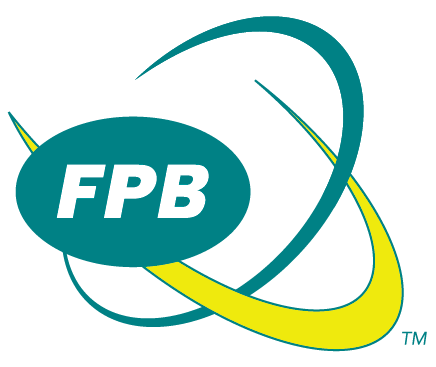Winter Weather Preparedness
/Winter weather is on its way. It's a good idea to have an emergency kit should power outages occur. This means having your own food, water and other supplies in sufficient quantity to last for at least 72 hours.
Food
Store at least a three-day supply of non-perishable food. Choose foods your family will eat. Remember any special dietary needs. Avoid foods that will make you thirsty. Choose salt-free crackers, whole grain cereals and canned foods with high liquid content.
- Ready-to-eat canned meats, fruits, vegetables and a can opener
- Protein or fruit bars
- Dry cereal or granola
- Peanut butter
- Dried fruit
- Nuts
- Crackers
- Canned juices
- Non-perishable pasteurized milk
- High energy foods
- Vitamins
- Food for infants
- Comfort/stress foods
Water
You should store at least one gallon of water per person per day. A normally active person needs at least one gallon of water daily just for drinking however individual needs vary, depending on age, physical condition, activity, diet and climate.
To determine your water needs, take the following into account:
- One gallon of water per person per day, for drinking and sanitation.
- Children, nursing mothers and sick people may need more water.
- A medical emergency might require additional water.
Supplies
A basic emergency supply kit could include the following recommended items:
- Battery-powered or hand crank radio and a NOAA Weather Radio with tone alert and extra batteries for both
- Flashlight and extra batteries
- First aid kit
- Whistle to signal for help
- Dust mask to help filter contaminated air and plastic sheeting and duct tape to shelter-in-place
- Moist towelettes, garbage bags and plastic ties for personal sanitation
- Wrench or pliers to turn off utilities
- Manual can opener for food
- Local maps
- Cell phone with chargers, inverter or solar charger
ALWAYS reserve 9-1-1 for life threatening emergencies – Call your utility company to report power, phone, cable, or internet outages NOT 9-1-1
Sign up for Smart911 so responders will have the information they need to better serve you – It’s free, private, secure, and only takes a minute.
For updated local emergency information please visit: www.frankfortema.org
Before Power Outage
- Check flashlights and battery-powered portable radios to ensure that they are working, and you have extra batteries. A radio is an important source of weather and emergency information during a storm.
- Have sufficient heating fuel, as regular sources may be cut off. Have emergency heating equipment and fuel (a gas fireplace, wood burning stove or fireplace) so you can keep at least one room livable. Be sure the room is well ventilated.
- Make sure your home is properly insulated. Caulk and weather-strip doors and windows to keep cold air out.
- Install storm windows or cover windows with plastic from the inside to provide insulation.
- To keep pipes from freezing, wrap them in insulation or layers of newspapers, covering the newspapers with plastic to keep out moisture.
- Let faucets drip a little to avoid freezing.
- Know how to shut off water valves.
- If pipes freeze, remove insulation, completely open all faucets and pour hot water over the pipes, starting where they are most exposed to the cold. A hand-held hair fryer, used with caution, also works well.
- If your water supply could be affected (a well-water pump system), fill your bathtub and spare containers with water. Water in the bathtub should be used for sanitation purposes only, not as drinking water.
- Pouring a pail of water from the tub directly into the bowl can flush a toilet.
- Set your refrigerator and freezer to their coldest settings (remember to reset them back to normal once power is restored). During an outage, do not open the refrigerator or freezer door. Food can stay cold in a full refrigerator for up to 24 hours, and in a well-packed freezer for 48 hours (24 hours if it is half-packed).
- If you have medication that requires refrigeration, check with your pharmacist for guidance on proper storage during an extended outage.
During Power Outage
- Dress for the season, wearing several layers of loose fitting, lightweight, warm clothing, rather than one layer of heavy clothing. The outer garments should be tightly woven and water repellent.
- Mittens are better than gloves.
- Wear a hat; most body heat is lost through the top of the head.
- Cover your mouth with a scarf to protect your lungs.
- Watch for signs of frostbite: loss of feeling and white or pale appearance in the extremities such as fingers, toes, ear lobes or the tip of the nose. If symptoms are detected, seek medical help immediately.
- Watch for signs of hypothermia: uncontrollable shivering, memory loss, disorientation, incoherence, slurred speech, drowsiness and apparent exhaustion. If symptoms are detected, get the victim to a warm location, remove any wet clothing, warm the center of the body first and give warm, non-alcoholic beverages, if the victim is conscious. Get medical help, as soon as possible.
- Snowdrifts can be used as a makeshift freezer for food. (Be aware of attracting animals).
- Snow can be melted for an additional water source.
- In order to protect against possible voltage irregularities that can occur when power is restored, you should unplug all sensitive electronic equipment, including TVs, stereo, VCR, microwave oven, computer, cordless telephone, answering machine and garage door opener
Information compiled from ready.gov and Tufts University. Special thanks to Deron Rambo and frankfortema.org






